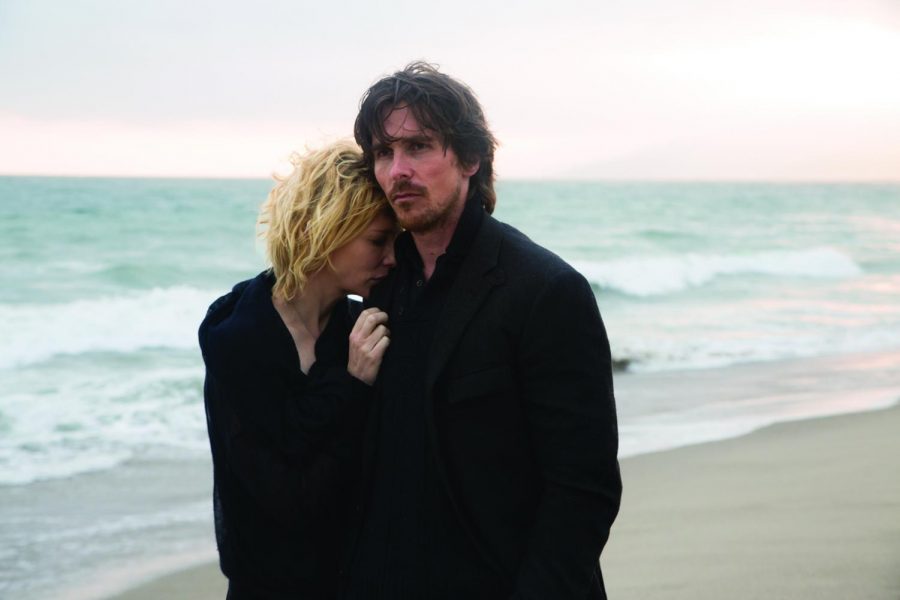Terrence Malick Producers raise their glasses to “Knight of Cups”
Cate Blanchett stars as ‘Nancy’ and Christian Bale as ‘Rick’ in Terrence Malick’s drama “Knight of Cups,” a Broad Green Pictures release.
March 14, 2016
Between 1973 and 2005, celebrated Hollywood heavyweight Terrence Malick only directed four films: “Badlands,” “Days of Heaven,” “The Thin Red Line” and “The New World.” However, despite this scant output, he has left an indelible mark on American cinema.
Beginning with 2011’s “The Tree of Life,” Malick has transitioned into the digital age with a flurry of experimental projects that utterly defy convention.
“Knight of Cups,” Malick’s latest film, stars Christian Bale as Rick, a disaffected Hollywood screenwriter seeking emotional fulfillment against the hallucinogenic backdrop of Los Angeles. The story unfolds through innovative camera work and a nonlinear narrative rich in symbolic content.
“Knight of Cups” opened in Chicago on March 11. The Chronicle spoke with producers Ken Kao, Nicolas Gonda and Sarah Green about Malick’s unique approach to filmmaking and how uninitiated viewers can interpret the challenging movie.
THE CHRONICLE: “Knight of Cups” often feels very organic. How much of what we see on screen is improvisation?
KEN KAO: As far as the crew goes, our mandate was to be very agile, nimble and adaptive. You’ve got to be really light on your feet. Our goal was to be ready for anything. As far as the cast and the actor-director relationship, what you see is a lot of organic experiences between [Malick] and his actors. Each actor has their own style and [Malick] sometimes gave them actual lines or pages from the script, but other times he gave them something else, whether it be music or a quote from a book. It was a unique collaboration between him and each actor.
What kind of energy did Malick bring to the set?
NICOLAS GONDA: What really distinguishes [Malick] is that one can answer that question in many different ways, depending upon who they are. [Working with Malick] is a singular experience in one’s life. Every film is a very memorable experience. When you walk onto a [Malick] set, it’s like watching a ballet. You see a group of people that operate so well together that they become an organism.
Malick’s films are very thematically rich. What do you hope that audiences take away from “Knight of Cups?”
SARAH GREEN: Like all of [Malick’s] films, it will speak differently to different audience members; it will be a mirror for the viewer. I don’t want to tell other people what to take away from the film. What we hope is that each of you will have a very strong sense of what this film is saying and that you will take that away and discuss it with your friends.
NG: One of the remarkable things about all of [Malick’s] films—and especially “Knight of Cups”—is that he’s constantly exploring new ground. He’s always able to find enchantment. Audiences can be enchanted and can apply their own experiences to what they see on the screen. The most exciting thing is that [Malick] leaves room for audiences to become participants and not just spectators. Everyone will walk away with something different by bringing themselves into the story.
Do you think the various references to myth and literature that populate “Knight of Cups” will influence the audience’s interpretation of the film?
SC: You have to look to the clues Terry gives you. He starts with a quote from “Pilgrim’s Progress” and he makes various references to a story that’s based on a 12th century Persian tale called “The Western Exile.” Those are signposts that can aid in understanding the structure of the film. If we’re listening, that will inform our experience of the film.
NG: I expect for decades to come, people will approach us and talk to us about [Malick’s] films in ways we would have never imagined. He does leave room for people to apply their own experiences. One of the most fulfilling experiences is to hear [Malick’s] films spoken about in ways that we would have never spoken about them ourselves.
Many people who aren’t cinema buffs struggle to follow Malick’s films. What is your advice to those who find the film difficult to access?
NG: The best advice is to watch the movie with your heart. Often, we’re trained to watch movies with our minds and seek immediate, literal meaning. In [Malick’s] films, he trusts the audience to be as much of a character in the film as the leading actors. Through that, you’re really encouraged to experience the film emotionally and let it wash over you. It’s like experiencing nature or listening to a beautiful song—you don’t necessarily have to understand every lyric.








